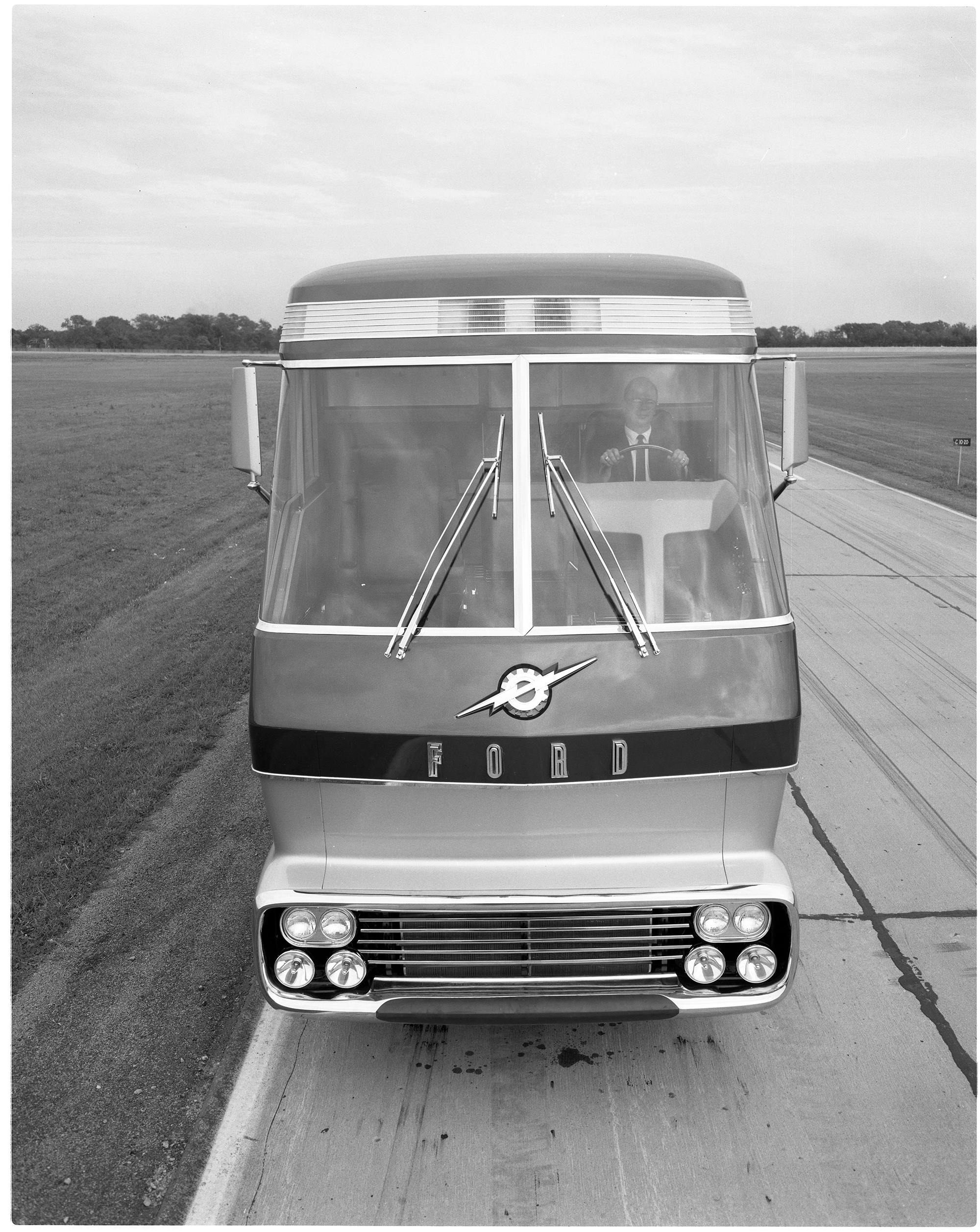Media | Articles
Lost for 40 years, Ford’s turbine-powered big rig has been rediscovered
Though automakers are now pouring resources into electric drivetrains, the search for promising new avenues of automotive propulsion is nothing new. In the ’50 and ’60s, the Big Three were elbow-deep in turbine development, hoping to bring the power-dense engines to market in one form or another. Chrysler had fantastically styled turbine concepts and a few can still be found today. GM built a series of Firebird concepts using the high-revving engines. Ford went big—as in big rig.

Big Red was a 13-foot-tall tractor-trailer, built in 1964 to show off what Ford saw as the future of long-distance hauling. The cab of Big Red had a reclining seat for the codriver with a TV that was only visible from the right-hand side. (The arrangement previewed the in-car screen we’re all so used to today, particularly the passenger-facing display found in the new Jeep Wagoneer.) The height of the cab combined with its cab-over design allowed for excellent visibility. A ladder automatically extended out from the door sill to help climb in and out, but once you were inside the cab, you might not want to leave. There was a compact bathroom and kitchenette along with an interstate highway map station. Not bad accommodations for the mid-’60s long-haul driver.

Of course, the crown jewel of Big Red was its 600-hp gasoline turbine engine. Plenty of long-haul diesel tractors in the U.S. today are in the 400–500-hp range, so in 1964 this would have been an even more impressive hot-rod hauler. We’re used to big trucks and tractors using massive turbodiesel engines that can put out power at a reasonable engine speed and keep chugging for hundreds of thousands of miles, so a high-revving turbine might not seem like a logical choice; but it makes quite a bit of sense for prolonged hauling.
Without pistons and piston rings, turbines don’t have to worry about the same sort of metal-to-metal contact. Turbine blades come close to but don’t actually contact the turbine housing, so engines can last for ages. In addition, their gearboxes reduce input shaft speeds from the tens of thousands of rpm to the typical output speed of a piston engine. Remember, you can multiply torque using gearing, but you can’t multiply horsepower. A 600-hp turbine would virtually flatten grades compared to a contemporary diesel engine.
For better or worse, turbines never became a viable option for passenger cars or heavy trucks. The cost and high operating temperature discouraged companies from adopting them, despite their quiet operation and improved economy. Ford worked on industrial applications for turbines into the early ’70s and learned some important lessons on high-temperature coatings and emissions, so the investment did return some dividends, but Big Red gathered dust until it was sold and fell off the radar. Recently, The Drive learned of its current status and the fact that it has been undergoing a long restoration. It now has a later-production, lower-power turbine, and its trailers are long-gone—but we may get to see Big Red under turbine power in the not-too-distant future.
Marketplace
Buy and sell classics with confidence





